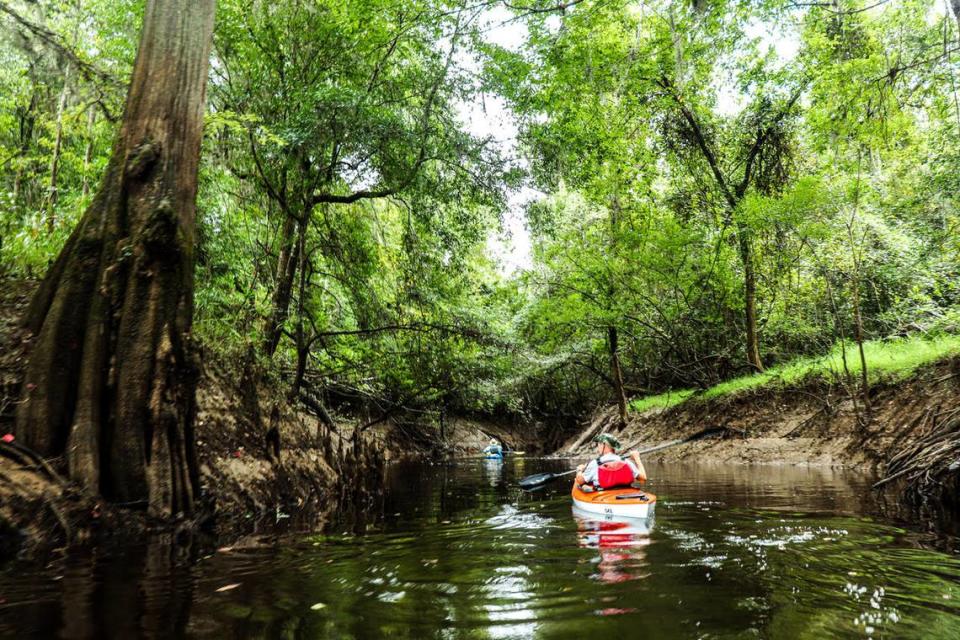Check out these photos of a kayak trip on the historic ‘River of the Carolinas’
Long ago, in an age before automobiles, the internet and Toaster Strudel, there was a highway that stretched from South Carolina beaches on the Atlantic Ocean to the very foot of the North Carolina mountains. Explorers and seafarers from far continents could travel up its length, while Native Americans and Scots-Irish farmers could descend for trade.
This highway was the mighty Santee River — the heart of the Carolinas.
Today the Santee does not flow “unvexed to the sea,” because most of its length has been siphoned for irrigation, diverted for commerce and dammed for electric power. Yet it remains beautiful and is a fantastic destination if you are seeking a day on the water in the wilds of the Lowcountry.
One of the best places to explore the Santee River is to launch at Lenud Landing, where U.S. 17 Alternative crosses at the community of Jamestown. This landing is the site of Lenud’s Ferry, an important crossing from before Colonial times. It was here, in 1780, that a patriot army was ambushed and defeated by British Col. Banastre Tarleton, contributing to the surrender of Charleston to the British a week later.
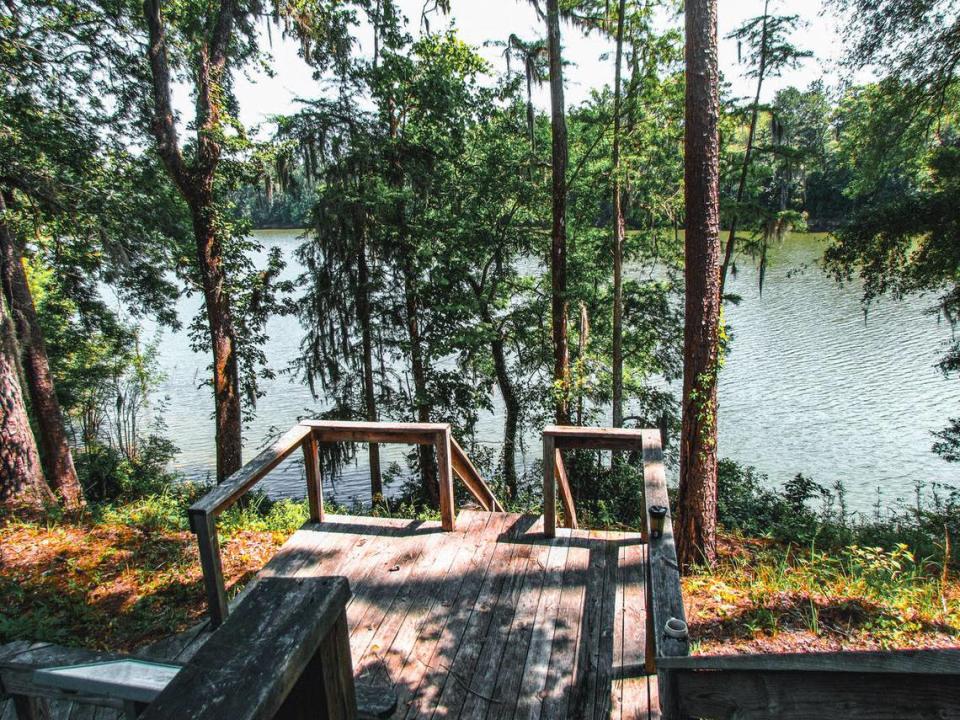
Here the Santee is wide and accessible, and when you launch you will pass beneath the highway as well as a stone and steel railroad bridge that still thunders from passing CSX trains. This is also the site of an important riverboat and steamboat landing, and a diligent search through internet archives will reveal steamers such as the “Dekalb” making routine stops on its way to Columbia.
From Lenud Landing you will enter one of the most remote and beautiful stretches of river in the Lowcountry. It was in this region that many French Huguenot settlers established farms and plantations, making it one of the richest regions in the colony.
As the Santee snakes its way over 75 river-miles to the sea, you will pass swampy creeks, quiet oxbow lakes, and limestone and marl embankments. These ancient sedimentary rock walls can house fossils and even spout small waterfalls during seasons of heavy rain.
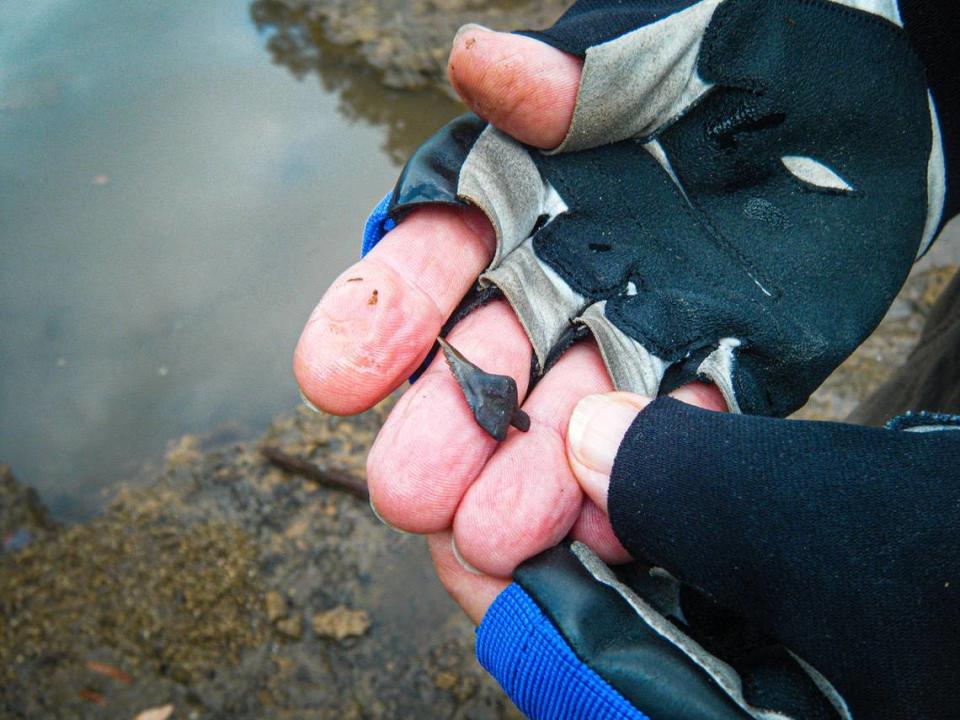
Recently, I kayaked the Santee from Lenud Landing to McConnels Landing and experienced just such weather conditions. Launching on an overcast, humid summer morning, the journey quickly encountered rain showers. The occasional squall treated us to “Forrest Gump” rain: “… every kind of rain there is. Little bitty stingin’ rain ... and big ol’ fat rain. Rain that flew in sideways.” After a stop for lunch on a quiet bend, the clouds cleared, and once more a sapphire blue sky was filled with sunshine.
When you go, you will encounter such a landscape, along with wildlife. Fish will jump in the water — including rare Atlantic sturgeon — eagles and osprey will patrol above, and alligators will cruise in silence along swampy margins.
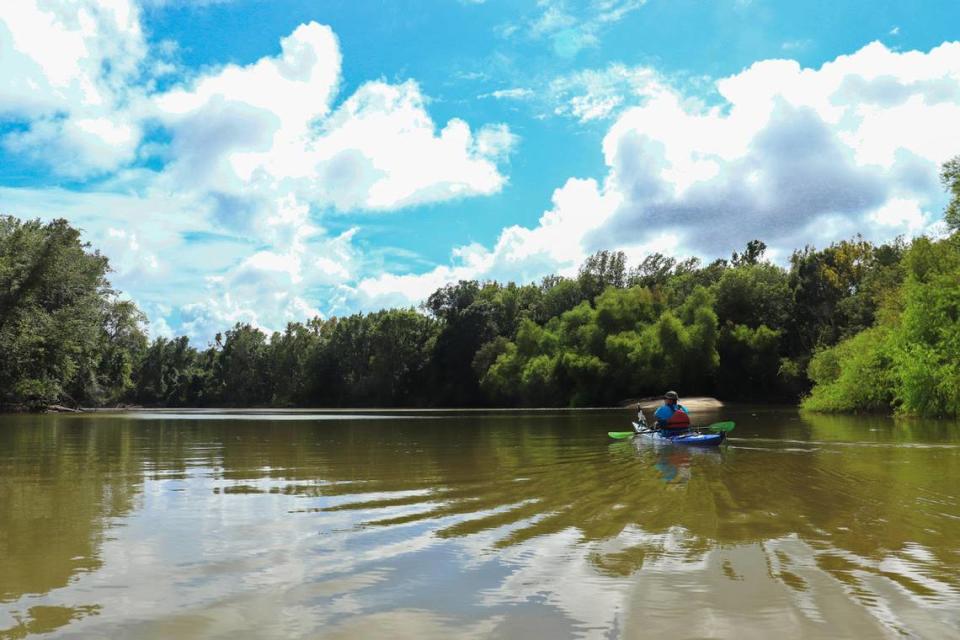
Before you take out, you can stop and explore Battery Warren. This Civil War earthwork was built by Confederates to prevent the blockading Union Navy from attacking the railroad, but it never saw action. Today it is a heritage preserve, where a path and interpretive signs tell its history, and a raised platform allows you a panoramic view of the river.
In all, this section of the Santee is one of the most accessible and most enjoyable in the Lowcountry. Whether you are fishing, exploring or simply relaxing on the river, a day on this “River of the Carolinas” will give you a renewed appreciation of past, present and future in the Lowcountry.
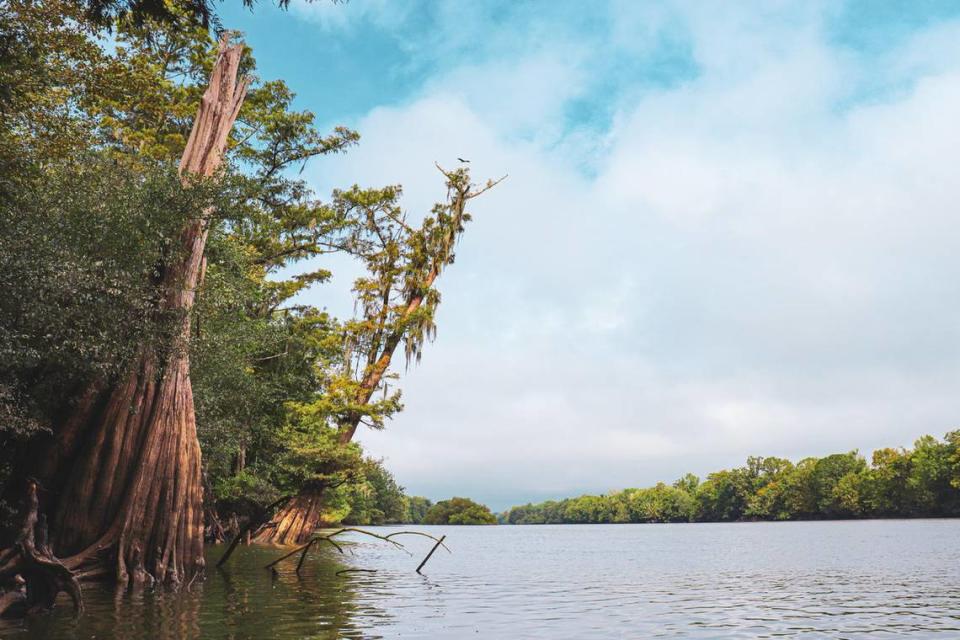
Getting there
Lenud Landing and Jamestown are a little over two hours from the Beaufort area and very accessible by highway. Take I-95 north to St. George and strike overland along U.S. 78 for 20 miles. Turn left onto Myers Mayo Road to U.S. 176. Take a left on Coopers Store Road and a right onto S.C. 6 to Monck’s Corner. Take U.S. 17 Alternative/U.S. 52 for 21 miles to Jamestown. The landing will be at the bridge. For a take-out at McConnels Landing, take S.C. 45/E French Santee Road for 10 miles. Take a left onto Old Oakhill Road. Here you will take series of gravel and dirt forest roads to the landing. Look for F.R. 204 on the right and be prepared for some mud in wet conditions. There are no facilities along the river, so take sunscreen, bug repellant and supplies for a day on the water.
